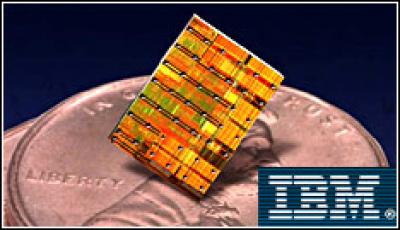IBM Boffins Claim Major Chip Advance

Researchers at IBM are claiming a breakthrough in chip design, after enabling chips to communicate via pulses of light rather than copper wire
In what could be a significant development for faster computers in the future, IBM scientists have made an advancement that will allow computer chips to communicate via pulses of light rather than copper wires.
IBM officials announced 3 March the advancement in the development of a nanophotonic avalanche photodetector.
The device, which takes light and converts it into electricity, is the fastest of its kind, according to IBM researchers, receiving optical information signals at 40Gbps and multiplying them by 10.
It also consumes less power than similar devices, running on a 1.5V voltage supply, which IBM says is 20 times smaller than what they’ve demonstrated in the past.
“This invention brings the vision of on-chip optical interconnections much closer to reality,” T.C. Chen, vice president of science and technology at IBM Research, said in a statement. “With optical communications embedded into the processor chips, the prospect of building power-efficient computer systems with performance at the exaflop level might not be a very distant future.”
 IBM researchers are publishing their findings in the latest issue of Nature magazine. A video of IBM’s findings can be seen here.
IBM researchers are publishing their findings in the latest issue of Nature magazine. A video of IBM’s findings can be seen here.
IBM, Intel and others are looking to develop on-chip components that use light to transmit data rather than the copper wiring found in traditional electrical interconnects. Industry observers say that given the speed and energy efficiency improvements promised by the technology, the development of optical communication devices will be a key to the way computers are built and operated over the next decade.
With major chip vendors such as Intel, Advanced Micro Devices and IBM – and even newer processor makers, such as Tilera – rapidly adding a greater number of processing cores onto a CPU, the need to improve the speed of data moving between the chips in a system, or between the servers themselves, is increasing.
Telecommunication companies already are replacing traditional telephone lines with fibre optic cables. The goal now is to shrink that capability so that the photonics can be used at the microprocessor level.
That is why other tech vendors also are working to develop optical communication devices for computer chips. Intel has been developing such technology for about seven years, and in December 2008 unveiled its own avalanche photodetector device. Other companies, such as Luxtera, also are working on such technology. In August 2007, Luxtera rolled out Blazar, a 40GB optical cable for use in HPC (high-performance computing) environments.